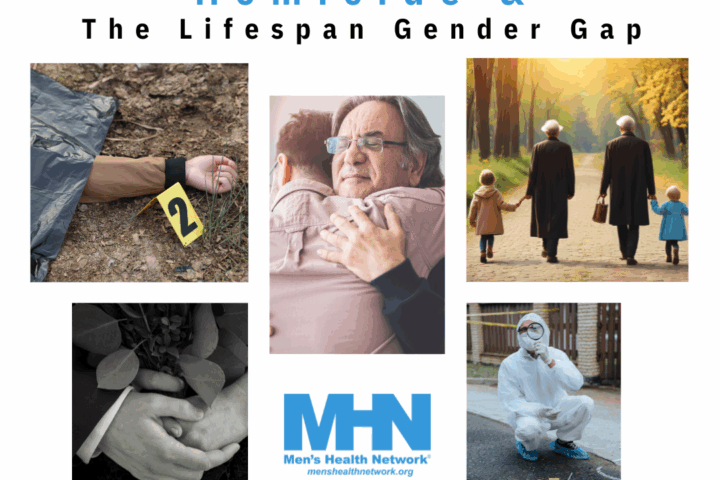 On average, Americans die sooner and experience higher rates of disease and injury than people in other high-income countries, says a new report from the National Research Council and Institute of Medicine. The report finds that this health disadvantage exists at all ages from birth to age 75 and that even advantaged Americans — those who have health insurance, college educations, higher incomes, and healthy behaviors — appear to be sicker than their peers in other rich nations.
On average, Americans die sooner and experience higher rates of disease and injury than people in other high-income countries, says a new report from the National Research Council and Institute of Medicine. The report finds that this health disadvantage exists at all ages from birth to age 75 and that even advantaged Americans — those who have health insurance, college educations, higher incomes, and healthy behaviors — appear to be sicker than their peers in other rich nations.
“We were struck by the gravity of these findings,” said Steven H. Woolf, professor of family medicine at Virginia Commonwealth University in Richmond and chair of the panel that wrote the report. “Americans are dying and suffering at rates that we know are unnecessary because people in other high-income countries are living longer lives and enjoying better health. What concerns our panel is why, for decades, we have been slipping behind.”
Americans live shorter lives — and are in generally worse health — than citizens of other wealthy nations, according to an extensive report released Wednesday by the National Research Council and the Institute of Medicine.
The analysis of international health data determined that American men had the lowest life expectancy among men in 17 countries, including wealthy European nations, Australia, Canada and Japan. U.S. women had the second-lowest life expectancy.
The study listed nine health areas in which Americans came in below average: infant mortality and low birth weight, injuries and homicides, adolescent pregnancy and sexually transmitted infections, HIV and AIDS, drug-related deaths, obesity and diabetes, heart disease, chronic lung disease and general disability.
Furthermore, even Americans who are white, insured, college-educated and upper-income are worse off than their counterparts around the world.
Interestingly, the new report places more stress on nonmedical shortcomings. For example, many people might be surprised to learn that for more than half the males who die before age 50, the cause of death has nothing to do with disease. Those causes include murder (19 percent of deaths in males under 50), traffic accidents (18 percent), other accidents (16 percent) and suicide (four percent). Only 35 percent are disease-related, and seven percent are other causes.
The report is the first comprehensive look at multiple diseases, injuries, and behaviors across the entire life span, comparing the United States with 16 peer nations — affluent democracies that include Australia, Canada, Japan, and many western European countries. Among these countries, the U.S. is at or near the bottom in nine key areas of health: infant mortality and low birth weight; injuries and homicides; teenage pregnancies and sexually transmitted infections; prevalence of HIV and AIDS; drug-related deaths; obesity and diabetes; heart disease; chronic lung disease; and disability.
Many of these health conditions disproportionately affect children and adolescents, the report says. For decades, the U.S. has had the highest infant mortality rate of any high-income country, and it also ranks poorly on premature birth and the proportion of children who live to age 5. U.S. adolescents have higher rates of death from traffic accidents and homicide, the highest rates of teenage pregnancy, and are more likely to acquire sexually transmitted infections. Nearly two-thirds of the difference in life expectancy between males in the U.S. and these other countries can be attributed to deaths before age 50.
It is not all bad news though, the researchers also noted. The U.S. earned relatively high marks for its low cancer death rates and success in controlling blood pressure and cholesterol levels. Although fewer Americans smoke and drink heavily, they have many other bad habits, the report says. Americans consume more calories per person and are more likely to abuse drugs; less likely to wear seat belts and more likely to be in a traffic accident; and they e more likely to use a firearm in acts of violence.
“While these outcomes are worthy of serious evaluation, there is more to the problem than comes from a superficial perusal,” says ACSH’s Dr. Gilbert Ross. “It cannot be ignored that America is a very heterogeneous society, unlike many other countries. We cannot simply compare and contrast our population to that of other nations without addressing the variety of populations that make up America.” He adds, “It goes without saying that a greater emphasis should be put on sex education and access to contraception to improve such items as teen pregnancy, STDs, and prematurity.”
Information in this article was complied from several sources:




The Slave of the Husband
Looking for forward to learning more from you afterward!…